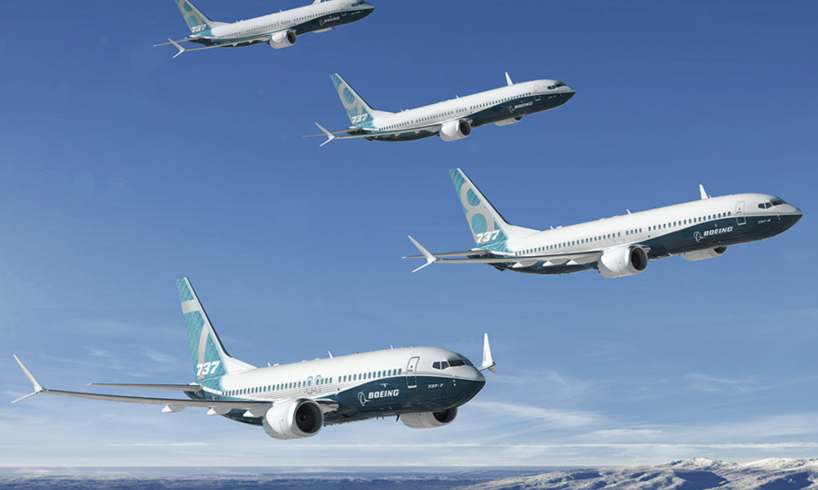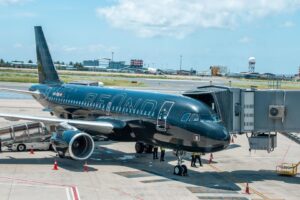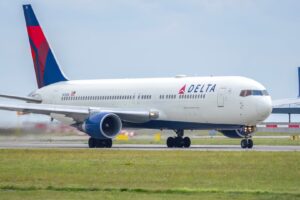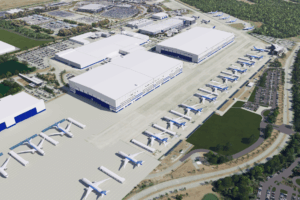
Chair of the House Committee on Transportation and Infrastructure Peter DeFazio (D-OR) and Chair of the Subcommittee on Aviation Rick Larsen (D-WA) one September 16, 2020 released the Committee’s final report on the Boeing 737 MAX. This report, prepared by Majority Staff, lays out the serious flaws and missteps in the design, development, and certification of the aircraft, which entered commercial service in 2017 before suffering two deadly crashes within five months of each other that killed a total of 346 people, including eight Americans.
The Committee’s 238-page report, which points to repeated and serious failures by both The Boeing Company (Boeing) and the Federal Aviation Administration (FAA), contains five central themes and includes more than six dozen investigative findings. These themes include:
Production pressures that jeopardized the safety of the flying public. There was tremendous financial pressure on Boeing and the 737 MAX program to compete with Airbus’ new A320neo aircraft. Among other things, this pressure resulted in extensive efforts to cut costs, maintain the 737 MAX program schedule, and avoid slowing the 737 MAX production line.
Faulty Design and Performance Assumptions. Boeing made fundamentally faulty assumptions about critical technologies on the 737 MAX, most notably with MCAS, the software designed to automatically push the airplane’s nose down in certain conditions. Boeing also expected that pilots, who were largely unaware that MCAS existed, would be able to mitigate any potential malfunction.
Culture of Concealment. Boeing withheld crucial information from the FAA, its customers, and 737 MAX pilots, including internal test data that revealed it took a Boeing test pilot more than 10 seconds to diagnose and respond to uncommanded MCAS activation in a flight simulator, a condition the pilot described as “catastrophic.” Federal guidelines assume pilots will respond to this condition within four seconds.
Conflicted Representation. The FAA’s current oversight structure with respect to Boeing creates inherent conflicts of interest that have jeopardized the safety of the flying public. The report documents multiple instances in which Boeing employees who have been authorized to perform work on behalf of the FAA failed to alert the FAA to potential safety and/or certification issues.
Boeing’s Influence Over the FAA’s Oversight Structure. Multiple career FAA officials have documented examples where FAA management overruled a determination of the FAA’s own technical experts at the behest of Boeing. These examples are consistent with results of a recent draft FAA employee “safety culture” survey that showed many FAA employees believed its senior leaders are more concerned with helping industry achieve its goals and are not held accountable for safety-related decisions.
“Our report lays out disturbing revelations about how Boeing—under pressure to compete with Airbus and deliver profits for Wall Street—escaped scrutiny from the FAA, withheld critical information from pilots, and ultimately put planes into service that killed 346 innocent people. What’s particularly infuriating is how Boeing and FAA both gambled with public safety in the critical time period between the two crashes,” Chair DeFazio said. “On behalf of the families of the victims of both crashes, as well as anyone who steps on a plane expecting to arrive at their destination safely, we are making this report public to put a spotlight not only on the broken safety culture at Boeing but also the gaps in the regulatory system at the FAA that allowed this fatally-flawed plane into service. Critically, our report gives Congress a roadmap on the steps we must take to reinforce aviation safety and regulatory transparency, increase Federal oversight, and improve corporate accountability to help ensure the story of the Boeing 737 MAX is never, ever repeated.”
“The Committee’s thorough investigation uncovered errors that are difficult to hear, but necessary to confront about the 737 MAX certification,” Chair Larsen said. “This report, combined with the findings and recommendations from the Lion Air and Ethiopian Airlines investigations, National Transportation Safety Board, Joint Authorities Technical Review and other entities, serve as a roadmap for changes to the FAA certification process. The 346 victims of the two tragic crashes and their families, as well as the traveling public rightfully expect Congress to act. As the Committee moves into the next phase of oversight, I will continue to work with Chair DeFazio and my colleagues to address the significant cultural and structural deficiencies identified in the report in order to improve safety.”
Additional information:
At the direction of Chair DeFazio and Subcommittee Chair Larsen, the Committee launched an investigation into the design, development, and certification of the 737 MAX, and related issues, in March 2019, shortly after the second crash involving a Boeing 737 MAX aircraft. As part of the 18-month long investigation, the Committee held five public hearings with more than 20 witnesses; wrote nearly two dozen oversight letters, obtained an estimated 600,000 pages of documents from Boeing, the FAA, and others; received information and insight from former and current employees who contacted the Committee directly through the Committee’s whistleblower link; and interviewed dozens of current and former Boeing and FAA employees.
To access the Final Report, newly released accompanying records, including transcribed interviews of both senior Boeing and FAA officials about the 737 MAX, as well as past statements, hearing video, and more, click here.
Boeing Statement on the House Transportation and Infrastructure Committee Report on 737 MAX
Boeing cooperated fully and extensively with the Committee’s inquiry since it began in early 2019. We have been hard at work strengthening our safety culture and rebuilding trust with our customers, regulators, and the flying public. The passengers and crew on board Lion Air Flight 610 and Ethiopian Airlines Flight 302, as well as their loved ones, continue to be in our thoughts and prayers.
Multiple committees, experts, and governmental authorities have examined issues related to the MAX, and we have incorporated many of their recommendations, as well as the results of our own internal reviews, into the 737 MAX and the overall airplane design process. The revised design of the MAX has received intensive internal and regulatory review, including more than 375,000 engineering and test hours and 1,300 test flights. Once the FAA and other regulators have determined the MAX can safely return to service, it will be one of the most thoroughly scrutinized aircraft in history, and we have full confidence in its safety. We have also taken steps to bolster safety across our company, consulting outside experts and learning from best practices in other industries. We have set up a new safety organization to enhance and standardize safety practices, restructured our engineering organization to give engineers a stronger voice and a more direct line to share concerns with top management, created a permanent Aerospace Safety Committee of our Board of Directors as well as expanded the role of the Safety Promotion Center.
We have learned many hard lessons as a company from the accidents of Lion Air Flight 610 and Ethiopian Airlines Flight 302, and from the mistakes we have made. As this report recognizes, we have made fundamental changes to our company as a result, and continue to look for ways to improve. Change is always hard and requires daily commitment, but we as a company are dedicated to doing the work.
For more information on steps Boeing is taking to strengthen safety, visit our 2020 Proxy Statement and our 737 MAX Resources Page.
Like this:
Like Loading…






